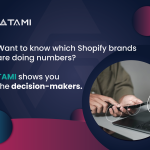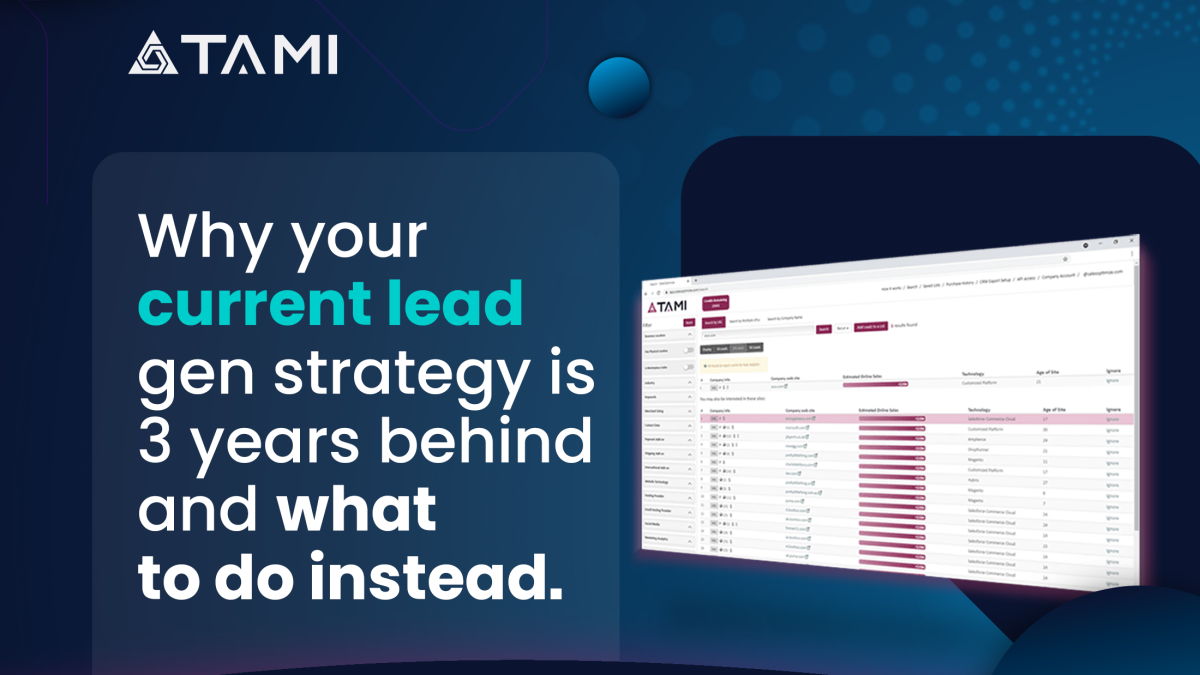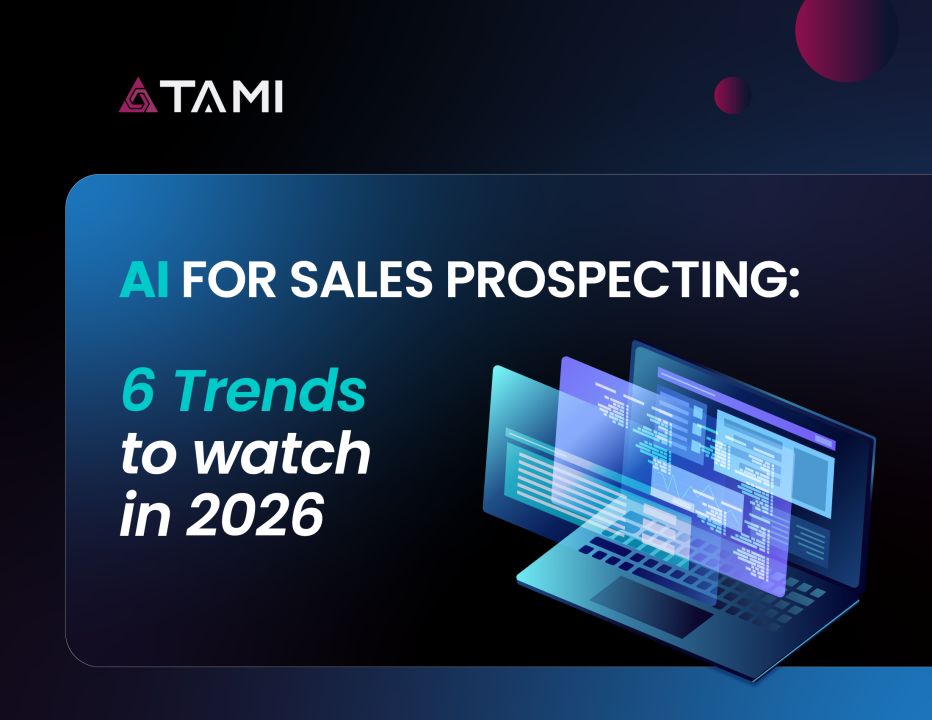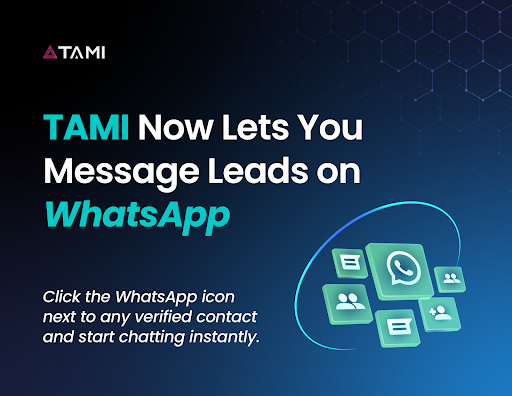
How to Find eCommerce Merchants Using Stripe
09/07/2025
Here’s How to Target Top Shopify Stores Doing Over $5M
07/08/2025Lead generation for logistics has always been a grind. Long sales cycles, crowded markets, and outdated databases make it hard to consistently fill the pipeline. If you're relying on cold calls, generic email lists, or purchased data from vendors who don't understand your space, you're already behind.
What logistics companies need isn't more contacts. It's better targeting. Faster insights. Smarter outreach.
In this article, we’ll break down the fastest way to do lead generation for logistics companies today using real-time data, smart filters, and industry signals that actually matter.
Why Lead Generation for Logistics Is Broken
Let’s start with the obvious: most logistics sales teams are wasting time on bad-fit leads.
Some rely on broad SIC codes that lump in companies with no shipping needs. Others work off scraped lists that include inactive domains or outdated contacts. Even the most “premium” vendors often serve the same overused datasets, missing the nuance of who actually buys shipping or fulfillment services.
This creates a big disconnect. Sales teams chase names, not signals. And that means your outreach is often misaligned, mistimed, or ignored completely.
In logistics, timing and targeting are everything. You need to know not just who to contact, but why now.
What Makes a Logistics Lead Actually Valuable?
Not every eCommerce brand needs logistics help. Not every retailer ships internationally. And not every company with a product has the volume or infrastructure to warrant outsourced support. The best logistics sales leads typically meet three criteria:
- They’re selling physical goods online
- They’re growing fast or going cross-border
- They’re likely using a provider you can outperform
That third point is key. If a merchant is already using DHL, but your solution offers faster last-mile delivery or better customs handling, that’s a wedge. The challenge is identifying these signals before your competitors do.
Step 1: Build a Smart Profile of Your Ideal Client
Before you start prospecting, define what a great logistics lead looks like in your niche.
Are you serving mid-sized DTC brands? Handling B2B freight across Europe? Offering final-mile in the U.S.? Your ICP determines what data to look for.
For example, if you focus on cross-border fulfillment, you want to find:
- Shopify Plus or Magento brands
- Selling internationally
- Using Stripe or Global-e for payments
- Shipping with UPS, FedEx, or DHL
That last bit, knowing who they currently use, is a game-changer.
TAMI’s platform lets you see exactly what payment, shipping, and eCommerce tech a company uses. Instead of guessing, you're identifying live websites that fit your criteria.
Step 2: Use TAMI to Find High-Intent Leads Fast
TAMI’s merchant detection system gives logistics teams the fastest route to qualified, verified B2B leads.
Rather than filtering by generic industry codes, you can build lead lists using live data such as:
- Shipping carrier (e.g., DHL, UPS, Royal Mail)
- Website platform (Shopify, Magento, WooCommerce)
- Market location (UK-based merchants shipping globally)
- Traffic or growth indicators (fast-growing brands)
- International readiness (multi-currency, multiple languages, global checkout)
For example, if you're targeting fast-growing Shopify Plus brands using DHL in the U.K., TAMI can generate that list in minutes. Each record comes with a verified email and phone number, job title, and LinkedIn profile, and real-time alerts if the contact changes jobs. You can even discover the lead’s technology stack and shipping provider info.
That’s not just a lead. It’s context you can act on today.

Step 3: Target Competitor Customers and Lookalikes
One of the fastest shortcuts in logistics lead generation is going after your competitors’ customers.
If you know a brand is currently using a shipping provider, you can beat on speed, cost, or transparency; that’s a warm lead, not a cold one.
This makes your pitch more targeted. Instead of “we’re a logistics provider,” you can say “we work with brands like yours that are scaling out of DHL and need better rates for Europe.”
And because you're starting with a clear advantage, your response rates tend to be much higher.
Step 4: Focus on Tech-Forward Brands
Logistics lead generation is no longer about pounding phones. The fastest-growing brands live in Shopify dashboards, use Slack to manage ops, and install new SaaS tools monthly.
That means your best leads are often the ones using Stripe, Recharge, Gorgias, or Global-e. These merchants are more likely to invest in streamlined, automated logistics.
TAMI helps you spot these tech-forward companies by surfacing full tech stacks, not just shipping data. If a merchant is using Global-e and Klarna, there’s a good chance they’re expanding into new markets. If they’ve added Recharge, they’re running subscriptions and need stable, recurring delivery.
These are the kinds of signals that sales teams often miss. But with TAMI, they’re right in front of you.
Why Speed Matters in Logistics Sales
In logistics, the timing of your outreach can be the difference between winning and losing a deal. When a brand starts scaling internationally or switching platforms, they’re often re-evaluating partners. If you reach them during that window, your win rate skyrockets.
That’s why static databases don’t cut it anymore. You need lead generation that moves as fast as your prospects do.
TAMI updates merchant signals in real time, flagging when they change shipping carriers, go international, or start hiring ops managers. You’re notified when it matters most. No more catching up after a competitor has already made contact.
Final Thoughts
Lead generation for logistics companies doesn’t have to be slow, manual, or unreliable. If you want faster results, you need better data. And not just more of it, but the right kind.
That means targeting eCommerce brands based on live shipping and payment stack signals. It means using tech adoption as a proxy for logistics maturity. And it means knowing exactly when to reach out, not just who.
TAMI is built for this. It gives logistics sales teams the data, context, and speed they need to win high-value deals in 2025 and beyond. Want to see it in action? Book a free demo and discover how to generate qualified logistics leads in minutes.









